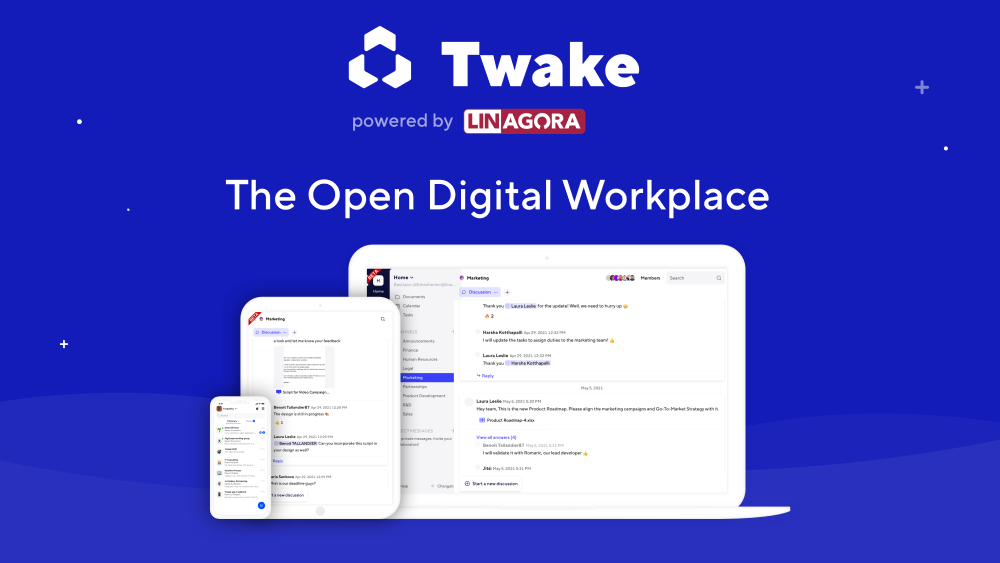





Made and hosted in the EU.


file sharing application
Fully compliant with GDPR. Made and hosted in the EU.


How online collaboration tools improve team efficiency and productivity?

A business is only as successful as the people that work there. When all of an organization’s departments – from product development and marketing to supply chain and customer support – work together to solve a client problem and provide an amazing experience, that is when success occurs.
Success, on the other hand, does not come easily. Every day, a fresh fire needs to be extinguished. A fresh challenge to take on, a new competitor to go up against. The road to success, on the other hand, becomes considerably easier when you have people to assist you.
Collaboration and teamwork are two of the most underappreciated, yet crucial, skills a company can have for success. Employees who complement each other’s talents and limitations become unstoppable over time.
Despite the fact that collaboration can increase workplace productivity, incite creativity, build a sense of community, instill a strong sense of purpose in employees, encourage problem-solving, motivate them with a goal to strive for, and lead to game-changing innovations and ideas, it is one of the most underutilized tools in the workplace.
People do not naturally gravitate toward a culture of collaboration and open communication.
We all want to work in isolation in our cubicles, free of outside distractions. Employees become more disconnected when an organization grows in size. So, what is the answer? Having a structure that encourages collaboration in the workplace.
This blog will examine the present work landscape and how firms might use available technology to improve their online communication flows.
But first, let’s get one thing straight.
Working from home is not a new phenomenon
Way before COVID-19 pandemic, a number of companies experimented with remote work or even fully distributed teams. For example, WordPress, owned by Automattic Inc, is 100% distributed since it was founded in 2005. That means everyone works from home, or more accurately, from wherever they choose in the world, and they have had a lot of success doing so.
Other businesses experimented with the mixed approach, allowing employees to work from home occasionally (as many as 30%, according to a Gartner survey). Remote work was a perk coveted by 54% of office workers who were willing to change jobs simply to work from home, according to a study conducted by Gallup.
As a result, the shift had already begun in recent years – albeit slowly. And if it had not been for the lockdowns and travel restrictions imposed earlier this year, it is unlikely that some enterprises or sectors would have evolved so quickly.
According to Slack’s analysis, 45% of the so-called knowledge workers polled claimed they now work remotely, with 66% doing so as a result of the coronavirus outbreak, and 27% working from home “as typical.”
The figures differ depending on the industry and area. However, there has been an indisputable increase in remote work, as well as the use of team communication platforms and online collaboration tools.

What is an online collaboration tool?
Online collaboration tools are applications your team can utilize to collaborate more successfully. These include but are not limited to:
- Intranet apps that are hosted on the cloud
- Project/Task Management Software
- Instant messaging applications
- Team collaboration applications that allow real-time collaboration
- Online video and audio-conferencing platforms
Over the last decade, these tools have become increasingly vital for enterprises. However, they have become a make-or-break asset for businesses navigating the COVID-19 driven move to remote working.
According to a recent survey by Forbes, remote work is expected to double in 2021, far from reverting to pre-pandemic levels. In order to successfully navigate this transformation, companies will need the perfect team collaboration platform.
Obstacles to collaboration in the workplace
There are a variety of obstacles that can stymie an organization’s efforts to collaborate in the workplace. Here are few examples:
1. Lack of support from top management
Every behavior in an organization begins at the top. Employees are unlikely to perform their share in encouraging collaboration if their leaders or bosses are unaware of the benefits of collaboration in the workplace or do not follow the rules themselves.
2. Lack of Communication
Every excellent project collaboration strategy starts with communication. When teams don’t meet their productivity targets, it’s more likely that a communication breakdown is to blame.
And how do the majority of teams communicate? These are some of the traditional collaboration tools:
- Spreadsheets
- Audio and Video Conferencing
While these tools are still useful in the correct circumstances, they are frequently insufficient to satisfy the needs of teams working on huge projects in the digital transformation age. Modern teams must be responsive and adaptable in a fast-paced work environment, and in order to do so, they require collaboration software that facilitates communication, Additionally, project managers must be able to assess progress, detect bottlenecks, and manage opportunities, and outcomes with ease.
It should also come as no surprise that according to research conducted by Mail Manager, email is a huge time drain compared to online collaboration tools. According to this research, 25% of employees spend the equivalent of one working day each week monitoring their inboxes. Over half (55%) of the respondents said they were frustrated because they could not find the correct documents in their inbox, which made them feel like they were wasting time (63%) or being less productive (48%) or losing track of project information (52%).
This all has a significant impact on the amount of time available to devote to more vital tasks – and that’s before considering that emails are ineffective for managing work, keeping track of progress, and sharing crucial documents with team members. To make matters worse, the more emails a team sends and receives, the more likely they are to miss vital updates because their inboxes are overflowing.
3. Distributed Teams
Teams may now work from anywhere in the world. This means you can hire talented people from all over the world and run your company around the clock. However, this has resulted in issues that are new to businesses.
Due to the inability to sit and communicate face-to-face, a fractured team effort can develop. Furthermore, access to information (documents, media, and other vital material) can be a challenge, particularly if your business still operates with paper documents.
Why having multiple tools is a problem?
Are new technologies the answer if traditional tools are not helping teams keep up with the pace of today’s professional landscape?
Organizations have the power of technology at their fingertips in the digital transformation age. There is an inexhaustible number of resources available to enable effective project collaboration, including cloud-based document management platforms, communication tools, and productivity applications.
Why are so many teams struggling to operate efficiently when there are so many technological options available? One reason is the variety of tools that teams utilize to assist them in completing their tasks.
Using numerous tools in a project adds extra complexity, which is one of the reasons why teams are not that productive as they may be. Moreover, using many tools might stifle productivity and sabotage the planning process. When dealing with distributed and cross-functional teams, it is important to keep things as simple as possible.

Advantages of using an online collaboration tool
The online collaboration tools are garnering interest from companies today as the benefits are undeniable:
- Collaboration tools can decrease e-mail volume by up to 30% and increase document writing time by up to 33% for team members.
- 97% of companies that use collaborative software say it has improved their service standard.
- Social collaboration has improved team efficiency and productivity by 20%.
Anecdotally, this is what users are saying:
- There is a clear exchange of information when employing online collaboration tools.
- Communications, files, and progress updates are all centralized and archived.
- Miscommunication is avoided, and everyone has access to records, so everyone knows who said what and when.
- File hand-offs and team comments have become more efficient.
- Improved transparency into project and task progress for the managers.
- Online collaboration tools open up a wider network of expertise.
Employees also do care about workspace collaboration. Employees want to accomplish work that contributes to the company’s bottom line while also making them feel like they are part of something bigger than themselves. Take a look at the following collaboration statistics to see why employees are so interested in collaboration in the workplace:
- Approximately 75% of employers consider teamwork and collaboration to be “extremely important”.
- 33% of millennials desire collaborative workspaces.
- A strong feeling of community (wonderful coworkers, celebrating milestones, a common objective), according to 54% of employees, held them with a company longer than was in their best interest.
- 99.1% prefer to work in an environment where employees are able to identify and discuss difficulties openly and effectively.
- Employee morale is most negatively impacted by a lack of open, honest communication, according to 33% of employees.
- Working with a fantastic team is cited by 37% of employees as the key reason for staying.
- Employee turnover is 50% lower in companies with excellent communication.

How to choose the right collaboration software?
A solution that expands the communication channel is essential, but you also want one that reduces the amount of time spent on emails and meetings so that your team members can work as efficiently as possible. When looking for collaboration software for your business, there are a few crucial things to look for:
1. Task Management
- A high-level roadmap that highlights long-term project goals.
- The ability to get a full picture of all work allocations and commitments across all projects.
- A Kanban board and/or a Gantt chart as a visual representation of the workflow.
2. File Sharing and Management
- File access across all devices (desktop, mobile, and tablet).
- The ability to share documents with all project participants, even external collaborators that are not part of your company.
- High-level security standard to protect your vital documents from data breaches.
- Individual and/or team-based permissions and access restrictions.
3. Team Communication
- Filter and search options to locate a specific topic, conversation, or contributor.
- Tagging feature to ensure that when you pose a question or give information, the right person sees your message.
- The ability to collaborate with everyone involved in your project, including external team members – regardless of function or framework.
4. Real-time Collaboration
- Real-time collaboration is required for a good workplace collaboration platform.
- Team members will be able to work together at the same time, brainstorm ideas, develop, and find better methods to solve problems using their collective knowledge and wisdom.
5. Scalable
- A good collaboration platform should be able to keep up with your expansion and the increased volume of content that comes with it.
- It should be adaptable enough to grow with your company as it expands, allowing for new staff and as a result, more content.
6. Flexible Permissions
Despite the fact that a workflow collaboration tool should be used by the entire company, there may be some sensitive documents for which you wish to restrict user access and permissions (for example, making some information “view only”).
A collaboration solution must allow executives to set user roles and permission levels that are appropriate for your corporate structure. Password protection, file access, document monitoring and versioning, and other data security features are critical.
These are some of the key characteristics to look for when implementing a workplace collaboration platform in your company. We are sure you are wondering if there is a tool that has all of the aforementioned characteristics. That’s exactly where we come in!

The online collaboration tool your company needs
Twake is the optimal solution for your task management, team collaboration, file-sharing, and real-time communication needs. Built to interface with multiple tools such as Zapier, OnlyOffice, n8n and many more, Twake incorporates a variety of task management, file sharing, and communication tools with a simple and intuitive interface.
Twake features help you:
- To assign and manage tasks.
- Improve team communication.
- Increase transparency by providing an overview of each task.
- Have a high-level overview of the team calendar and activities.
- Organize tasks and documents to save time.
- Increase productivity as a result of better file-sharing, messaging, and audio/video conferencing.
- Have a multi-device solution with a global reach.
- Integrate multiple tools into a single platform to boost productivity.
- Lower your operating costs.
If you want to learn more about Twake, please head over to https://twake.app
Twake enables you to include everyone in a project, whether they are across the hall or across the globe. Your team members will quickly accept the friendly, intuitive interface.
There is a larger desire for speedier and more efficient delivery in today’s professional environment. Consumer preferences are rapidly changing, and businesses that want to stay ahead of the competition must be flexible enough to adapt and thrive. Collaboration software that keeps all team members in the loop, whether they are scattered, collocated, or external, can help organizations that are struggling to keep up with the speed of a rapidly evolving market, break down productivity barriers and enhance productivity.
Author: SHIVAM CHAUHAN, LINAGORA
